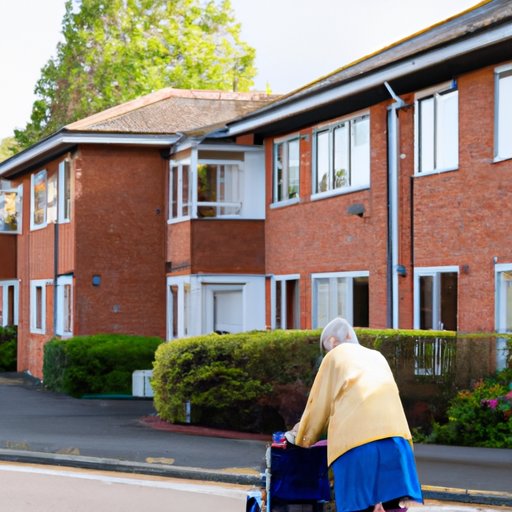Introduction
Elderly care homes are residential facilities designed to provide personal care and support for older people who are no longer able to live independently. These homes offer a range of services, from basic care such as help with daily activities like dressing and bathing, to more specialized care such as medical assistance or memory care.
The need for elderly care homes in the UK is growing rapidly. The number of people aged 65 and over is projected to increase by almost 40% between 2020 and 2040, leading to an increasing demand for elderly care services.
Statistical Overview of Elderly Care Homes in the UK
There are currently around 18,000 elderly care homes in the UK. The majority of these homes are privately owned and operated, although some are run by charities or local authorities. These homes offer a variety of services, including residential care, nursing care, dementia care and supported living.
Most elderly care homes are located in England, followed by Scotland, Wales and Northern Ireland. The vast majority of these homes are concentrated in urban areas, with London having the highest number of elderly care homes in the country.

Understanding the Growing Need for Elderly Care Homes in the UK
The growing need for elderly care homes in the UK can be attributed to a number of factors. One of the main drivers is the aging population, which is projected to reach over 20 million by 2040. As people age, their physical and mental health needs become more complex, making it increasingly difficult for them to live independently.
Another factor driving the need for elderly care homes is the increasing number of people with long-term health conditions, such as dementia or Alzheimer’s. These conditions require specialized care that cannot be provided at home, so care homes are often the best option.

Exploring the Different Types of Elderly Care Homes in the UK
The type of care offered by elderly care homes in the UK varies depending on the individual needs of the resident. The most common type of elderly care home is a residential care home, which provides basic care such as help with daily activities, meals and medication management.
Nursing homes provide more comprehensive care, including specialist medical and nursing care. They are typically staffed by nurses and other healthcare professionals, and may also provide rehabilitation services.
Supported living is another type of care home, which offers tailored support to enable residents to live as independently as possible. This type of home usually provides a range of services, such as help with budgeting and shopping, and access to leisure activities.
Examining the Cost of Elderly Care Homes in the UK
The cost of elderly care homes in the UK varies depending on the type of care required and the location of the home. On average, residential care homes cost around £550 per week, while nursing homes are more expensive at around £750 per week. Supported living costs vary widely, depending on the level of care required.
In some cases, the cost of elderly care is covered by the government. Local authorities in England will pay for care if an individual has less than £23,250 in savings and assets. In Scotland, anyone with less than £27,250 in savings and assets qualifies for financial assistance.

Investigating the Impact of Elderly Care Homes on Local Communities
Elderly care homes can have both positive and negative impacts on local communities. On the plus side, they can provide much-needed jobs and generate economic activity in the area. They can also help to reduce isolation and loneliness among older people, providing them with companionship and social activities.
On the downside, elderly care homes can cause disruption to the local community. They can lead to increased traffic and noise, and the presence of elderly care homes can make some people feel uncomfortable or unsafe.
Comparing Elderly Care Homes Across the UK
When choosing an elderly care home, it is important to compare different homes to ensure you are getting the best quality of care. All elderly care homes in the UK must meet certain standards set out by the Care Quality Commission, which inspects and regulates care homes.
It is also important to consider the quality of life in different areas when choosing a care home. Different parts of the country have different levels of amenities and services, so it is wise to research the local area before making a decision.
Conclusion
The number of elderly care homes in the UK is increasing due to the growing demand for elderly care services. Different types of care are available, ranging from basic care to specialist medical and nursing care. The cost of care varies depending on the type of care required and the location of the home, and some costs may be covered by the government. When choosing a care home, it is important to compare different homes to ensure you are getting the best quality of care.
(Note: Is this article not meeting your expectations? Do you have knowledge or insights to share? Unlock new opportunities and expand your reach by joining our authors team. Click Registration to join us and share your expertise with our readers.)
